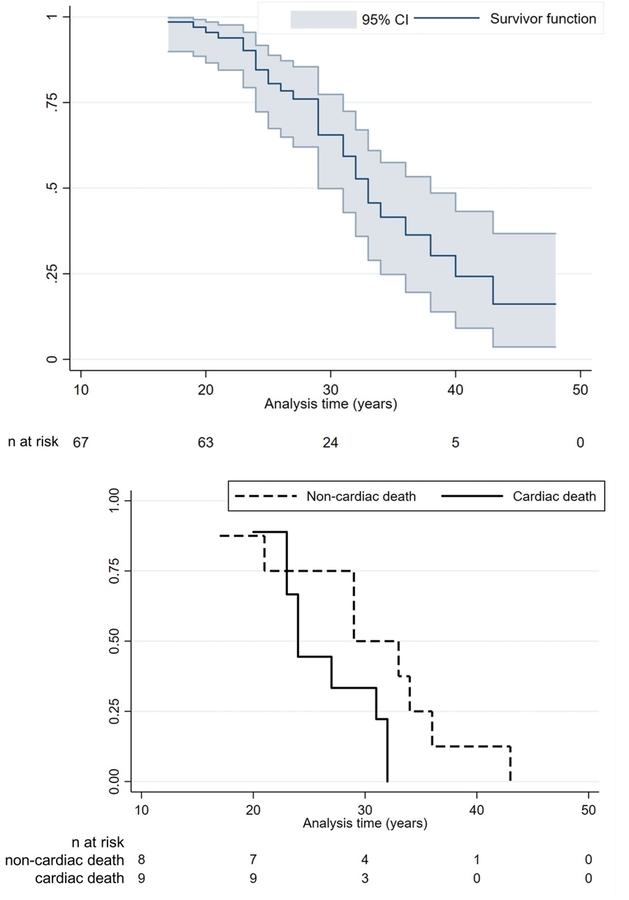Abstract
Background: Cardiomyopathy with reduced left ventricular ejection fraction (LVEF) has become an important factor for survival in patients with Duchenne muscular dystrophy (DMD).
Objectives: To investigate the relationship between LVEF and survival.
Methods: In a 20-year observational study at a single centre, patients with DMD (age ? 16y) with at least three echocardiograms, the association of LVEF with survival and time to cardiac or non-cardiac death was studied.
Results: In 67 DMD patients (430 echocardiograms), the decrease in LVEF over a median±SD follow-up of 9.1 ± 5.1 years was -10.0 ± 13.9% absolute, but LVEF progression was highly variable. 84% were receiving an ACE inhibitor and 54% a beta-blocker at last follow-up. Median survival was 33 (IQR 25-40) years (figure 1A). 28/67 (42%) of the cohort had died and LVEF was a significant negative predictor of survival (HR 0.95 (95%CI 0.91-0.99), p< 0.007). Those who died of cardiac death (53% of known causes of death) had significantly lower LVEF at the time of death (LVEF -11.0 (95%CI -21.1 to -0.9)%, p = 0.035) compared with non-cardiac death (figure 1B) and tended to die at a younger age.
Conclusions: Cardiomyopathy with systolic heart failure is a leading cause of death, and lower LVEF is an independent predictor of mortality at younger ages in patients with DMD. Patients with DMD appear to be undertreated with respect to heart failure drug therapy.